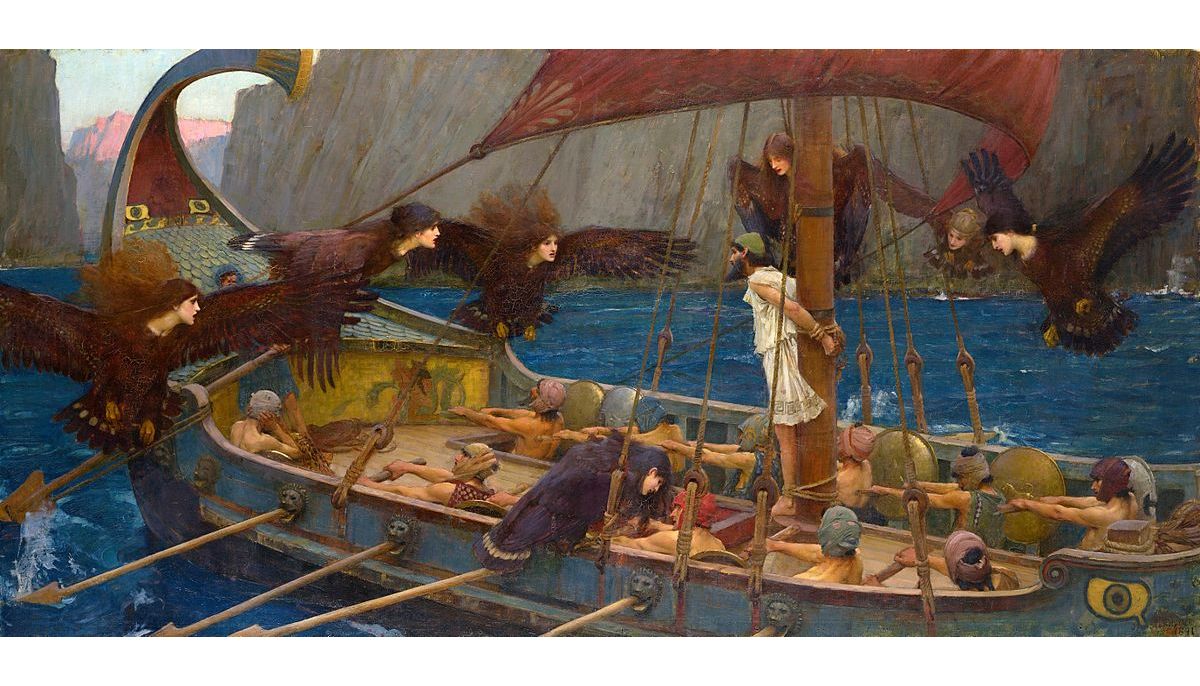Greek mythology, a realm where divine beings and mythical creatures intertwine, presents two fascinating figures: sirens and harpies. Often confused yet distinctly unique, these entities capture the essence of ancient stories with their human-bird features and intriguing roles.
This article cuts through the myths to highlight the differences between the enchanting sirens and the formidable harpies, exploring their origins, purposes, and the legendary tales surrounding them.
Join us as we unravel the mysteries of these captivating creatures, offering a clear and concise guide for anyone intrigued by the rich tapestry of Greek mythological lore.
TLDR: Sirens vs. harpies, are they the same?
Sirens and harpies are not the same. While both are part of Greek mythology and share the characteristic of being human-bird hybrids, their roles, origins, and depictions differ significantly.
Sirens are often associated with the sea and are known for their enchanting music that lures sailors to their doom. They are not inherently evil; instead, they are a natural obstacle for sailors.
On the other hand, harpies are seen more as divine instruments of punishment sent by the gods to abduct or torment humans. Their appearance varies from beautiful winged women to monstrous creatures with bird-like features.
What is a siren?

In Greek mythology, sirens are typically depicted with the head of a woman and the body of a bird. Renaissance art, however, often portrays them as mermaid-like figures, blurring the lines between sea and sky mythologies.
Known for their mesmerizing songs, sirens are said to lure sailors to their deaths, drawing ships onto rocks or into storms. The concept of the siren song, irresistible and deadly, captures the imagination, symbolizing temptation and the dangers that accompany it.
Origins of sirens
The origin of sirens is deeply rooted in Greek mythology. They are often mentioned in stories and epic poems, most notably in Homer’s “Odyssey.”
In this tale, Odysseus encounters the sirens during his long voyage home from Troy. Aware of their deadly song, he orders his crew to plug their ears with beeswax and ties himself to the mast to ensure he can listen without succumbing to their lure.
This encounter highlights the siren’s role as a challenge to be overcome rather than as an inherently evil being. Their existence serves as a test for sailors, a part of the natural order within the mythological world, much like the sea itself.
What is a harpy?

A harpy is a creature from Greek mythology that combines birds and human features. Unlike sirens, harpies can control the wind, which they often use to abduct or snatch away evildoers.
Considered servants of Zeus, the king of the gods, harpies are agents of divine will, executing punishments upon those who offend the gods.
history of harpies
Harpies are mentioned by several ancient authors, including Hesiod, Aeschylus, and Virgil, each contributing to the mythology surrounding these creatures.
One of the notable stories involving harpies is the tale of King Phineus of Thrace. After revealing Zeus’s secret plans, a gift derived from his prophetic abilities, Phineus was punished by Zeus. He was blinded and condemned to an island where he could never eat. The food set before him was always snatched away by harpies, leaving him in constant torment.
This punishment continued until Jason and the Argonauts arrived during their quest for the Golden Fleece. The Boreades, sons of the North Wind Boreas and skilled warriors, confronted the harpies and freed Phineus from his suffering. This tale underscores the harpies’ role as instruments of punishment and their relentless nature in executing the gods’ will.
Why are harpies and sirens confused?
The confusion between harpies and sirens likely stems from their shared characteristics as human-bird hybrids within Greek mythology. However, their roles, allegiances, and actions within myths are distinct.
Sirens are associated with the sea and use their songs to lure sailors to their deaths, embodying natural challenges and temptations. Harpies, conversely, are linked to the sky and serve as divine punishers, snatching away evildoers at the behest of Zeus.
Drawing from our previous discussion, while both creatures share the motif of human and bird elements, their purposes and the myths surrounding them are different. Sirens represent the dangerous allure of the unknown, while harpies are embodiments of divine retribution.
Further Questions on Mythological Creatures
The confusion between sirens and harpies represents just a fraction of the complexities and ambiguities within Greek mythology. Questions like “Are mermaids and sirens the same?” and “Are there male sirens?” further illustrate the depth and breadth of mythological problems that have fascinated scholars and enthusiasts alike.
Greek myths are renowned for their fluidity—constantly evolving, intertwining, and adapting over centuries. This dynamic nature is what makes them so intriguing. As stories were passed down through generations, orally and later in written form, details were altered to suit the times, the audience, or the storyteller’s purpose. The result is a rich tapestry of narratives reflecting different periods’ changing values, beliefs, and artistic inspirations.
The myths of sirens and harpies, with their varying depictions and roles, exemplify this tradition of adaptation. From the earliest Greek poets to Renaissance artists and modern-day writers, these mythological figures have been reimagined in countless ways, keeping their stories alive and relevant. This ability to evolve while maintaining their essence makes Greek myths endlessly fascinating, offering new insights and interpretations to each generation that encounters them.





